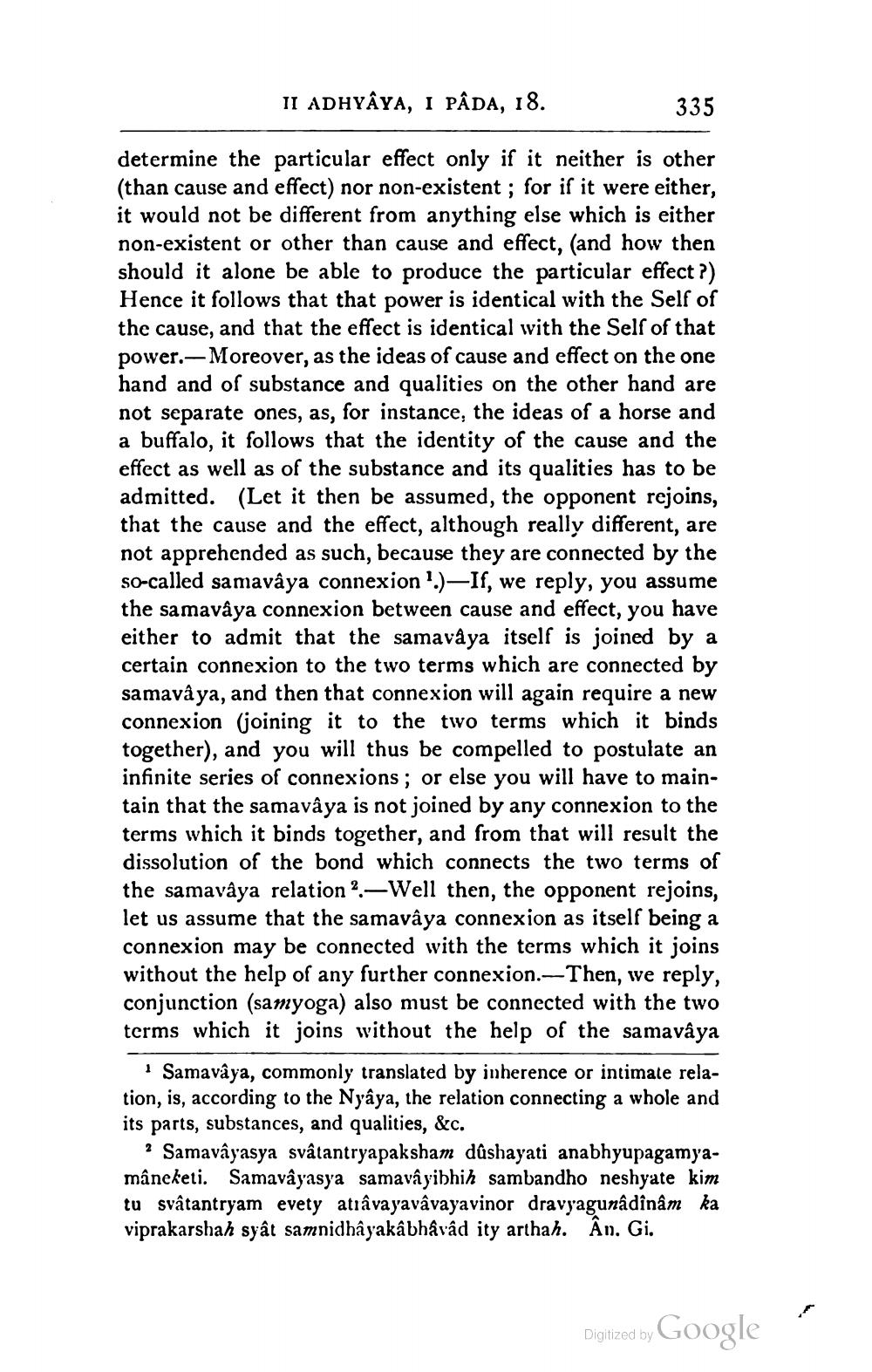________________
II ADHYÂYA, I PÂDA, 18.
335
determine the particular effect only if it neither is other (than cause and effect) nor non-existent ; for if it were either, it would not be different from anything else which is either non-existent or other than cause and effect, (and how then should it alone be able to produce the particular effect?) Hence it follows that that power is identical with the Self of the cause, and that the effect is identical with the Self of that power.—Moreover, as the ideas of cause and effect on the one hand and of substance and qualities on the other hand are not separate ones, as, for instance, the ideas of a horse and a buffalo, it follows that the identity of the cause and the effect as well as of the substance and its qualities has to be admitted. (Let it then be assumed, the opponent rejoins, that the cause and the effect, although really different, are not apprehended as such, because they are connected by the so-called samavâya connexion '.)-If, we reply, you assume the samavâya connexion between cause and effect, you have either to admit that the samavaya itself is joined by a certain connexion to the two terms which are connected by samavâya, and then that connexion will again require a new connexion (joining it to the two terms which it binds together), and you will thus be compelled to postulate an infinite series of connexions; or else you will have to maintain that the samavâya is not joined by any connexion to the terms which it binds together, and from that will result the dissolution of the bond which connects the two terms of the samavâya relation?:-Well then, the opponent rejoins, let us assume that the samavâya connexion as itself being a connexion may be connected with the terms which it joins without the help of any further connexion.—Then, we reply, conjunction (saniyoga) also must be connected with the two terms which it joins without the help of the samavâya
Samavâya, commonly translated by inherence or intimate relation, is, according to the Nyâya, the relation connecting a whole and its parts, substances, and qualities, &c.
? Samavâyasya svâtantryapaksham důshayati anabhyupagamyamâneketi. Samavâyasya samavâyihhih sambandho neshyate kim tu svâtantryam evety atravayavâvayavinor dravyagunâdînâm ka viprakarshah syât samnidhayakâbhâvâd ity arthah. Ân. Gi.
Digitized by Google




